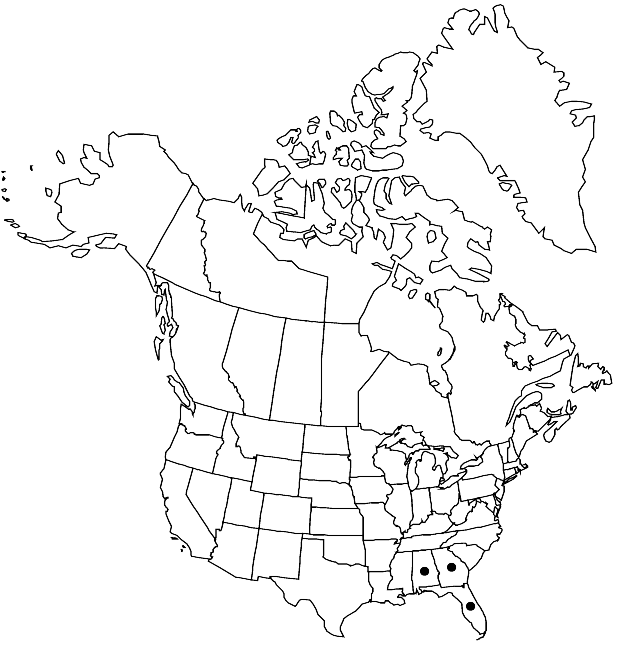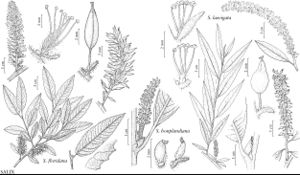Difference between revisions of "Salix floridana"
Fl. South. U.S., 430. 1860.
FNA>Volume Importer |
FNA>Volume Importer |
||
| Line 34: | Line 34: | ||
-->{{#Taxon: | -->{{#Taxon: | ||
name=Salix floridana | name=Salix floridana | ||
| − | |||
|authority=Chapman | |authority=Chapman | ||
|rank=species | |rank=species | ||
| Line 49: | Line 48: | ||
|publication year=1860 | |publication year=1860 | ||
|special status= | |special status= | ||
| − | |source xml=https://jpend@bitbucket.org/aafc-mbb/fna-data-curation.git/src/ | + | |source xml=https://jpend@bitbucket.org/aafc-mbb/fna-data-curation.git/src/f50eec43f223ca0e34566be0b046453a0960e173/coarse_grained_fna_xml/V7/V7_19.xml |
|genus=Salix | |genus=Salix | ||
|subgenus=Salix subg. Protitea | |subgenus=Salix subg. Protitea | ||
Revision as of 22:14, 16 December 2019
Stems: branches red-brown, pubescent to glabrescent; branchlets yellow-brown or red-brown, sparsely velvety or pubescent. Leaves: stipules absent or rudimentary on early ones, foliaceous on late ones, apex rounded; petiole (shallowly grooved adaxially), 13–20 mm, puberulent or velvety adaxially; largest medial blade narrowly oblong, oblong, lanceolate, or narrowly ovate, 100–170 × 38–55 mm, 2.5–3(–4) times as long as wide, base rounded, convex, or subcordate (cordate on larger leaves), margins serrulate or spinulose-serrulate, apex acute, acuminate, or convex, abaxial surface sparsely tomentose, hairs straight, adaxial highly glossy, sparsely villous or pilose to glabrescent (midrib remaining villous), hairs white and ferruginous; proximal blade margins entire; juvenile blade sparsely pubescent to very densely villous or pilose abaxially, hairs white. Catkins: staminate 29–72 × 12–15 mm, flowering branchlet 1–10 mm; pistillate 50–81 × 17–27 mm, flowering branchlet 5–30 mm; floral bract (tawny, sometimes greenish), 2–3.6 mm, apex rounded, entire, abaxially sparsely hairy, hairs wavy; pistillate bract persistent after flowering. Staminate flowers: abaxial nectary 0.4–0.8 mm, adaxial nectary ovate, 0.5–1.1 mm, nectaries distinct or connate and cup-shaped; stamens 3–7; filaments hairy basally; anthers 0.4–0.5 mm. Pistillate flowers: adaxial nectary square, 0.5–0.9 mm; stipe 3.2–5.6 mm; ovary obclavate to ellipsoidal, (rarely puberulent), beak gradually tapering to styles; ovules 4 per ovary; styles 0.3–0.4 mm; stigmas 0.16–0.17–0.2 mm. Capsules 6–7 mm. 2n = 38.
Phenology: Flowering mid Feb-early Apr.
Habitat: Swamps, marshy shores of streams in woodlands, calcareous areas, shade tolerant
Elevation: 10-40 m
Distribution

Ala., Fla., Ga.
Discussion
Of conservation concern.
The closest relatives of Salix floridana are in the Old World sect. Tetraspermae. A detailed discussion of the distribution, taxonomy, and relationships of this uncommon subtropical endemic was given by G. W. Argus (1986).
Selected References
None.
